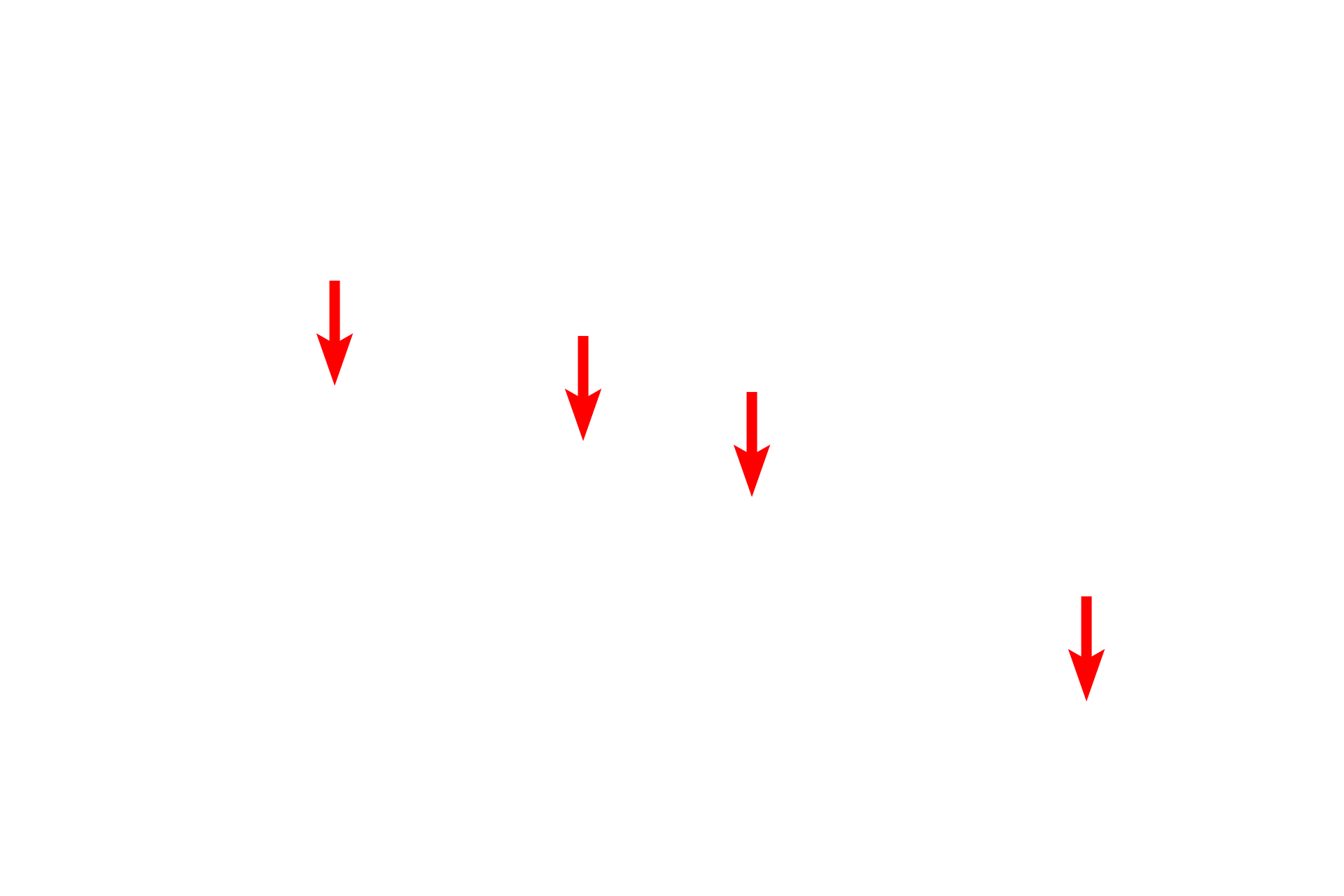
Nuclear pores
The nuclear envelope contains openings called nuclear pores, which consist of a complex of proteins encircling an opening. Nuclear pores regulate the bi-directional transit of materials between the cytoplasm and nucleus. In this image, six pores are visible and are marked by sites where the perinuclear space is obscured and the heterochromatin is interrupted. 38,000x

Nuclear pores
The nuclear envelope contains openings called nuclear pores, which consist of a complex of proteins encircling an opening. Nuclear pores regulate the bi-directional transit of materials between the cytoplasm and nucleus. In this image, six pores are visible and are marked by sites where the perinuclear space is obscured and the heterochromatin is interrupted. 38,000x

Inner nuclear membrane
The nuclear envelope contains openings called nuclear pores, which consist of a complex of proteins encircling an opening. Nuclear pores regulate the bi-directional transit of materials between the cytoplasm and nucleus. In this image, six pores are visible and are marked by sites where the perinuclear space is obscured and the heterochromatin is interrupted. 38,000x

Outer nuclear membrane
The nuclear envelope contains openings called nuclear pores, which consist of a complex of proteins encircling an opening. Nuclear pores regulate the bi-directional transit of materials between the cytoplasm and nucleus. In this image, six pores are visible and are marked by sites where the perinuclear space is obscured and the heterochromatin is interrupted. 38,000x

Perinuclear space
The nuclear envelope contains openings called nuclear pores, which consist of a complex of proteins encircling an opening. Nuclear pores regulate the bi-directional transit of materials between the cytoplasm and nucleus. In this image, six pores are visible and are marked by sites where the perinuclear space is obscured and the heterochromatin is interrupted. 38,000x

RER
The nuclear envelope contains openings called nuclear pores, which consist of a complex of proteins encircling an opening. Nuclear pores regulate the bi-directional transit of materials between the cytoplasm and nucleus. In this image, six pores are visible and are marked by sites where the perinuclear space is obscured and the heterochromatin is interrupted. 38,000x

Mitochondria
The nuclear envelope contains openings called nuclear pores, which consist of a complex of proteins encircling an opening. Nuclear pores regulate the bi-directional transit of materials between the cytoplasm and nucleus. In this image, six pores are visible and are marked by sites where the perinuclear space is obscured and the heterochromatin is interrupted. 38,000x

Illustration
The nuclear envelope contains openings called nuclear pores, which consist of a complex of proteins encircling an opening. Nuclear pores regulate the bi-directional transit of materials between the cytoplasm and nucleus. In this image, six pores are visible and are marked by sites where the perinuclear space is obscured and the heterochromatin is interrupted. 38,000x
 PREVIOUS
PREVIOUS